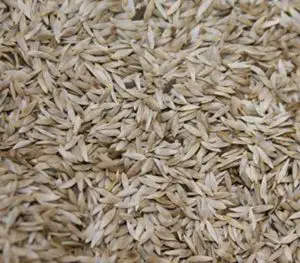Contents
When you hear the word lettuce, what image comes to mind? You aren’t the only one who thought of Iceberg lettuce. As far as lettuce goes, the Iceberg variety is the standard. Despite the crunchiness of iceberg lettuce, if you look at the nutrient value of varieties of lettuce, they will win hands down. Among those types of lettuce is Romaine Lettuce.
Hydroponic lettuce is a crop that does best in cooler environments. Without further ado, let’s get started on growing from start to finish. Everything begins with seeds. Lettuce seed packets of good quality are worth the investment.
Seed Starting Process
 Whenever you sow a lettuce seed, you need to be aware of one thing. It is essential to use fresh seeds within the expiration date. The older the seeds are, the less likely they are to enter the germination period. It’s great if you bought your seeds from a reputable company.
Whenever you sow a lettuce seed, you need to be aware of one thing. It is essential to use fresh seeds within the expiration date. The older the seeds are, the less likely they are to enter the germination period. It’s great if you bought your seeds from a reputable company.
Start some seeds in a moist seed-starting medium like grow cubes which you should soak in clean water for an hour. Ensure that it is not too wet. Make sure to squeeze the medium well so all of its water will drain out. Water drips out when a tightly squeezed medium is moist. The percentage of water can also be determined using moisture meters. Excess water can cause the seeds to drown if water levels are too high.
You should not bury seeds deeply. When seeds are adequately sown, 100% of them will germinate. A light source is necessary for lettuce seeds to germinate. As soon as the seedlings emerge, place them under a fluorescent light or any artificial lighting. There should be between 10 and 14 hours of light per day for hydroponically grown lettuce.
To plant lettuce seeds, we create a slight depression in the potting media surface and then press the lettuce seeds down. You should cover the seeds partially with sowing media to keep them intact. To keep moist conditions, we cover the tray or flat with polythene sheets. This has always worked well for us.
A couple of days should be enough for the seeds to germinate. The ideal temperature dramatically influences the seed germination process. High temperatures induce dormancy in lettuce. For best results, keep the air temperature between 68 and 75 degrees. A shaded area is the best place for the grow tray.
It is as satisfying as getting a perfect score on a test when you get germination. If your seeds didn’t germinate well, don’t worry. Repetition is critical, keeping these points in mind.
- Moisture content in the media is just right.
- Sowing at the proper depth.
- Seeds of high quality.
- Suitable temperature.
Seed starting plugs are also an excellent way to germinate hydroponic crops. When plants have developed true leaves, they are generally ready to be transplanted.
Transplanting
Planting seeds in germination plugs or starter cubes makes transplanting simple. The foam cube only needs to be gently pulled apart from its joint and placed in an appropriate pot or net pot to grow to its full size. It is ideal not to disturb the plant roots in any way. We used a hydroponic nutrient solution to grow the lettuce plants in a Nutrient Film Technique System. Remember also that the temperature of the hydroponic solution should not be higher than ambient temperature to avoid root damage.
Transplanting is a simple process regardless of the system you are using. Make sure the container has a good drainage system and a good quality potting medium if you are planting in soil or cocopeat. Ideally, you should transplant the baby lettuce in the evening when the sun hasn’t yet set so that they have time to adjust.
Once transplanted, lettuce seedlings require little maintenance. The crop is short-term, which makes it much easier to handle. The hydroponic plants will start to grow a couple of days after transplanting. It’s now just a matter of watering them well.
We grew using the NFT system, and yours might differ. You may have different hydroponic systems to choose from that meet your preferences. Growing times shouldn’t vary much regardless of the system you’re using. From the day of planting to harvest, Romaine lettuce takes about 20 – 25 days.
Feeding your Lettuce Crops
Multiple options are available when growing hydroponically. Leafy greens can either be cultivated with your nutrient solutions or purchased in ready-made form.
You don’t need to wait for 25 days. Any day is a good day to eat Romaine lettuce leaves. If you are not selling them commercially, you are free to harvest them at any time for your use. You will love the taste of tender leaves.
Lettuce Care
Insects and pests share our planet with us. Be prepared to deal with pests. Although lettuce is a short-term crop, it is not free of pests. Pests that commonly attack lettuce include:
- Caterpillars
- Leaf miner
- Mealybugs
- Slugs
- Spider mites
- Whiteflies
Harvesting Lettuce
You can pick the whole head of lettuce or just the outer leaves. When it comes to commercial production, picking the whole head is faster. You will save time and effort this way. Individual leaves can be picked when they are for consumption, and there aren’t too many plants.
You can pick the leaves for a few days. Before the plant flowers, you will see a talk stalk growing in the center of the plant as it continues to grow. Bolting occurs when a lettuce flower stalk goes into flowering. As lettuce leaves mature and grow, they acquire a bitter taste. Don’t forget to harvest early and have fun, too!

